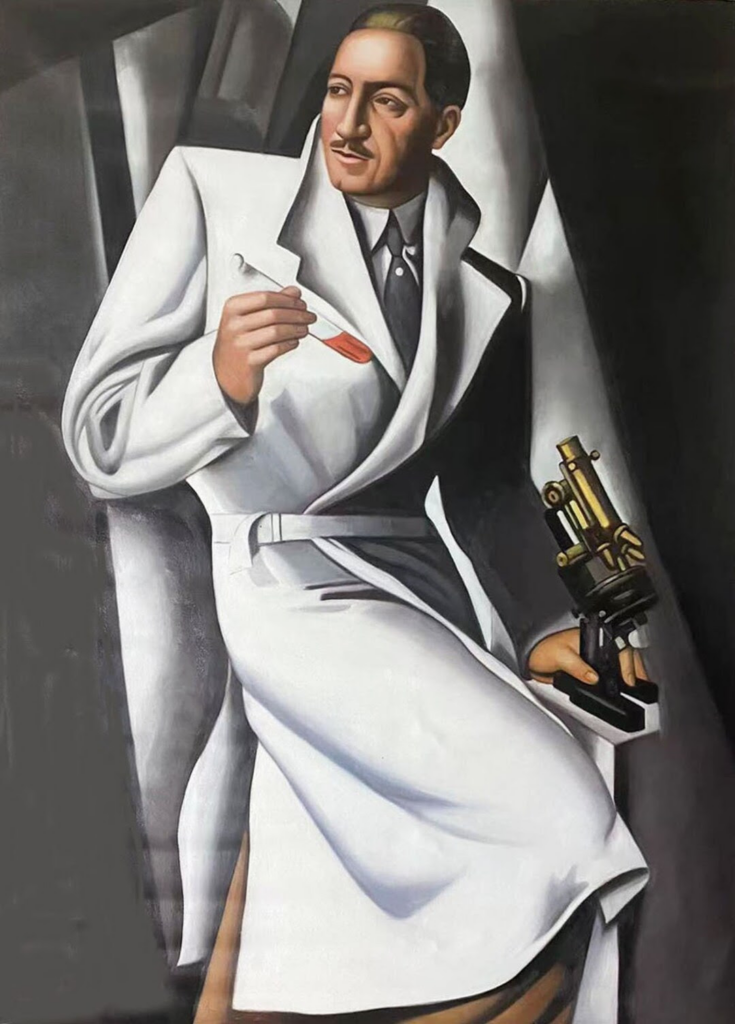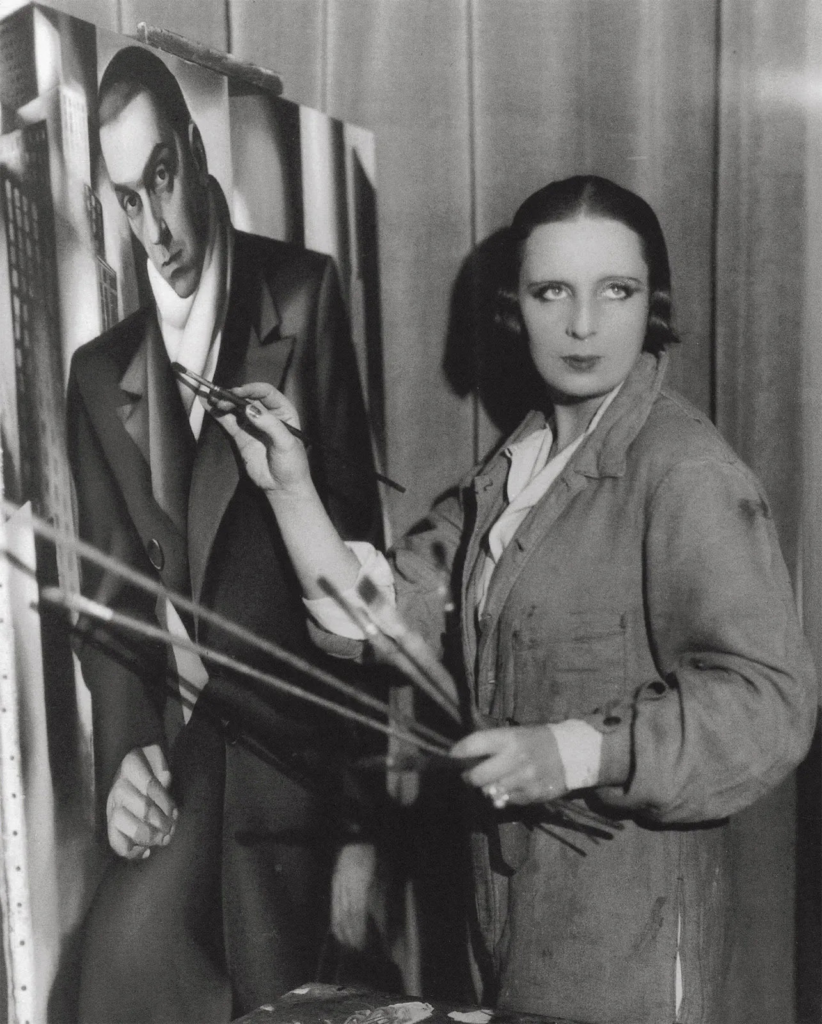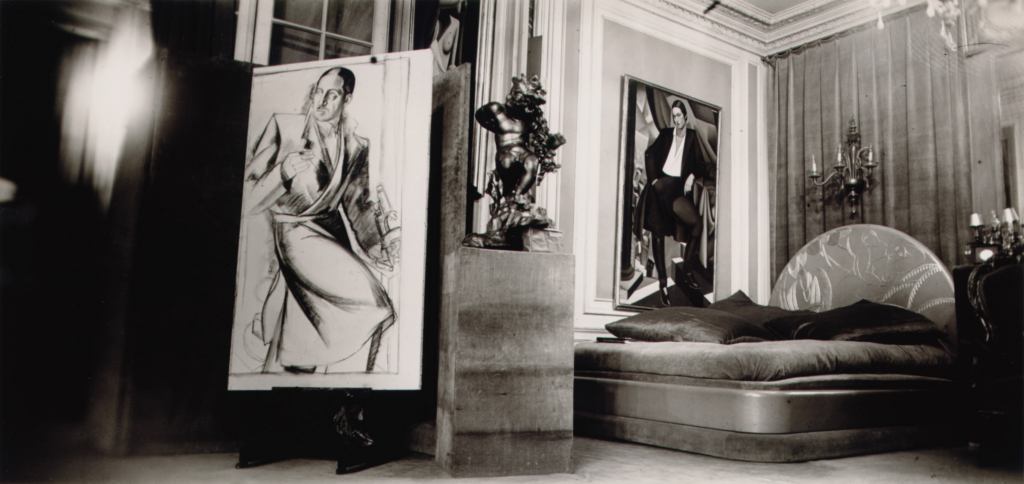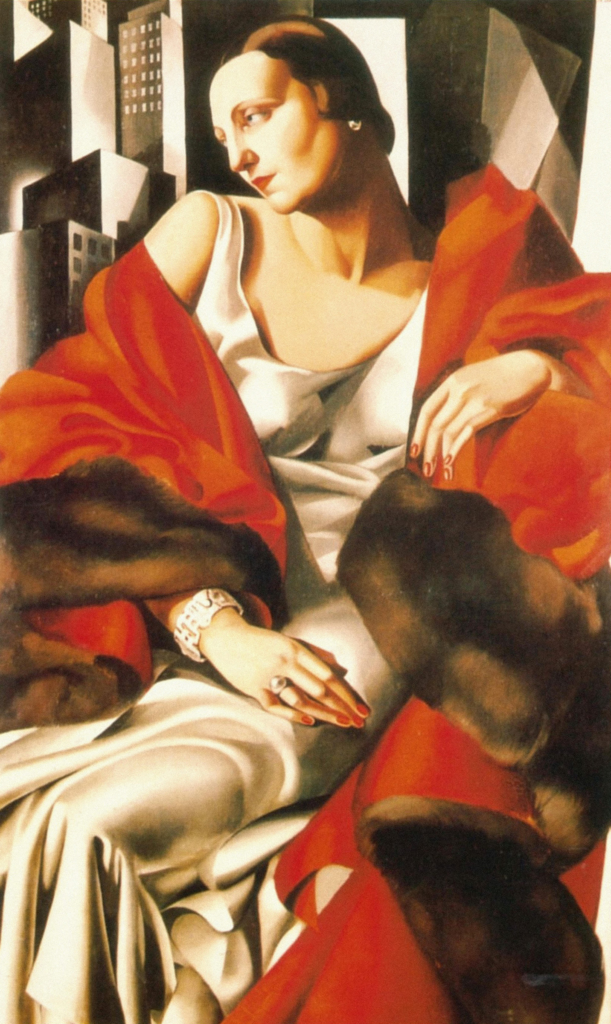Tuesday, February 18, 2025 – ART DECO STYLE IN THESE 1930’S PAINTINGS



Tamara de Lempicka’s
Portrait du Docteur Boucard:
Among a hundred paintings,
you could always recognise mine’
Tuesday, February 18, 2025
ISSUE #1398
CHRISTIES GOING ONCE FEBRUARY 15, 2025
Christies (c)
The eminent biochemist Pierre Boucard was an ideal subject for Lempicka, who ‘loved art and society in equal measure’ — and she portrayed the venerated man of science as the embodiment of Art Deco urbanity and glamour

In the années folles between the two world wars, Tamara de Lempicka was one of the most sought-after portraitists in Paris. She socialised with — and painted pictures of — numerous members of her era’s elite, from the Marquis d’Afflitto to the cabaret singer Marjorie Ferry.
For Lempicka, the personal and the professional were intricately intertwined. Not for nothing did Jean Cocteau claim that she ‘loved art and high society in equal measure’. A chic hostess, she used her apartment-atelier on Rue Méchain in the 14th arrondissement not just as a space to live and work, but as a venue to throw lavish cocktail parties. Spread over three floors, the property — designed by the modernist architect Robert Mallet-Stevens — was viewed at the time as the epitome of modernity, renowned for its sleek interior complete with chrome fittings and an American bar.
Lempicka purchased and moved into the atelier in the late 1920s. Financial stability, provided in part by the patronage of the medical scientist Pierre Boucard, had enabled her to do so. A keen art collector, Boucard owned a number of the artist’s works, and also commissioned her to produce a series of portraits of his family. One painting from that series — that of Boucard himself, from 1928 — is being offered at Christie’s in London in the 20th/21st Century Evening Sale on 5 March 2025.

The doctor is depicted in the bold Art Deco style for which Lempicka is famous, oozing cool elegance. Adopting a dynamic pose, Boucard twists his body towards a shaft of light from beyond the picture’s left, which illuminates him. He rests one hand on a microscope, and clasps a glass test-tube in the other — both of them tools of his trade.
Boucard was a successful man. He had made his greatest contribution to medicine in 1907, when he invented the probiotic pharmaceutical Lactéol, a drug still widely used today to improve digestive health.
At first glance, his attire in the portrait seems to be a formal laboratory coat, as befitting a scientist. Upon closer inspection, though, one sees that it is in fact a stylish white trench coat, an item of clothing more readily associated with a detective. Is the suggestion that Boucard’s scientific discoveries were every bit as noteworthy as any detective’s criminal ones?
His collar fashionably upturned, Boucard sports both a trim moustache and a gleaming pearl on an emerald-coloured tie — all contributing to the sense that this is no regular biochemist. This is a highly sophisticated man of the world.

For her part, Lempicka came to be known as ‘the Baroness with the Brush’, true to the striking public persona she had crafted for herself in Paris as an aristocrat-émigré. Very little is known for certain about her early life, including the place and year of her birth.
She grew up in Poland, before moving to St Petersburg as a young woman. Following the Bolshevik revolution of 1917, Lempicka (then probably in her early twenties) fled Russia, along with her first husband Tadeusz and their infant daughter. They settled in Paris, where she would train in the studios of Maurice Denis and André Lhote.
Success came relatively fast. The first Parisian exhibition to which she contributed was the Salon d’Automne of 1922, and she showed in numerous other salons thereafter. ‘Among a hundred paintings, you could always recognise mine,’ Lempicka said in later life. ‘The galleries… put me in the best rooms, always in the centre, because my painting attracted people.’

The golden period of the artist’s career is widely agreed to have been the decade between the mid-1920s and the mid-1930s. Her pictures evoked the glamour, optimism and extravagance of that age, and Lempicka herself welcomed media attention, regularly inviting photographers to her studio to shoot her.
One such invitee was the esteemed society photographer Jacques Henri Lartigue, Boucard’s brother-in-law. In 1928, shortly before the artist’s move to Rue Méchain, he took a set of pictures at her atelier-residence on Rue Guy de Maupassant, one of which shows Portrait du Docteur Boucard in progress. The canvas can be seen on an easel, with the composition sketched out fairly comprehensively in charcoal. Lempicka would go on to complete the work in oil paints in her distinctively glossy style.
In her best works, the artist achieved a masterful blend of the classical and the contemporary. Apropos of the former, she often cited a teenage tour of Italy with her grandmother — ‘taking in the treasures of the Italian Old Masters’ — as a formative influence. ‘[It was then] that my love of painting, and my desire to become a painter, were born,’ she said.
For the Boucard portrait, Lempicka embraced the Mannerist ideal of the figura serpentinata, where a figure rotates around a central axis, so that the lower limbs face in one direction and the torso in almost the opposite direction, thus creating a sense of movement.
As for the modern aspects of Portrait du Docteur Boucard, three are perhaps worth highlighting. The tight cropping and atmospheric lighting, for a start, are devices used in the cinema of the day. The Cubist backdrop hints at an urban mise en scène, with several tall buildings. Finally, there’s the metallic sheen with which Lempicka finished this painting and many others, a feature alluding to the advances of the Machine Age.
The artist died in 1980, yet her fusion of old and new continues to prove popular. She is currently the subject of her first retrospective in the United States (which recently closed at the de Young Museum in San Francisco and will be on show at the Museum of Fine Arts, Houston, from 9 March to 26 May 2025).
In the picture coming to auction, Boucard doesn’t look us in the eye. He knowingly looks away. Like many of Lempicka’s subjects, the scientist is imbued with an urbane self-confidence that reflects the aspirations and worldly success of the haute société to which he belonged.
Led by the 20th/21st Century Evening Sale and The Art of the Surreal on 5 March 2025, Christie’s 20th and 21st Century Art auctions take place in London and online from 26 February to 20 March. Find out more about the preview exhibition and sales
PHOTO OF THE DAY
AFTER A GLOOMY WEEKEND, A GLORIOUS DAY
AT MADISON SQUARE

CREDITS
CHRISTIES ()C)
CHRISITES GOING ONCE FEBRUARY 1`5, 2025
Artwork: © Tamara de Lempicka Estate, LLC / ADAGP, Paris and DACS,
London 2025. Photo: Alamy
All image are copyrighted (c) Roosevelt Island Historical Society unless otherwise indicated
THIS PUBLICATION FUNDED BY DISCRETIONARY FUNDS FROM CITY COUNCIL MEMBER JULIE MENIN & ROOSEVELT ISLAND OPERATING CORPORATION PUBLIC PURPOSE FUNDS.


Copyright © 2024 Roosevelt Island Historical Society, All rights reserved.Our mailing address is:
rooseveltislandhistory@gmail.com

Leave a comment